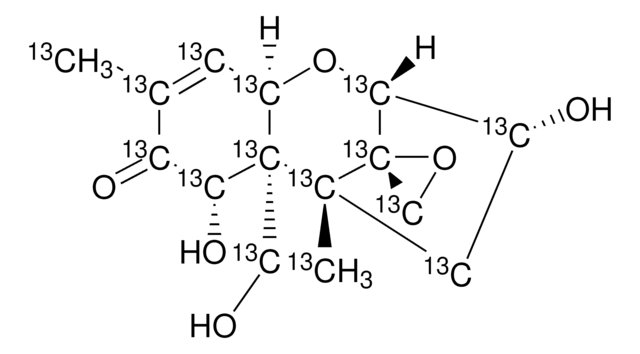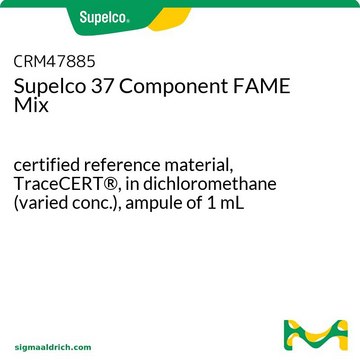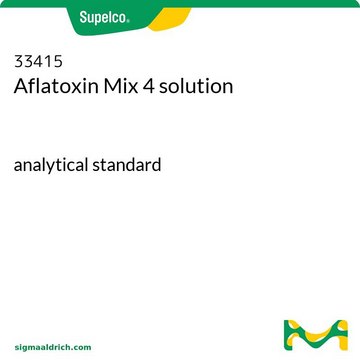IRMM315
4-Deoxynivalenol in acetonitrile
IRMM®, certified reference material
Sinônimo(s):
Deoxynivalenol solution, 3α,7α,15-Trihydroxy-12,13-epoxytrichothec-9-en-8-one, DON, Vomitoxin
About This Item
Produtos recomendados
grau
certified reference material
Agency
IRMM®
fabricante/nome comercial
JRC
aplicação(ões)
general analytical
Formato
matrix material
temperatura de armazenamento
2-8°C
cadeia de caracteres SMILES
CC1=C[C@H]2O[C@@H]3[C@H](O)C[C@@](C)([C@]34CO4)[C@@]2(CO)[C@H](O)C1=O
InChI
1S/C15H20O6/c1-7-3-9-14(5-16,11(19)10(7)18)13(2)4-8(17)12(21-9)15(13)6-20-15/h3,8-9,11-12,16-17,19H,4-6H2,1-2H3/t8-,9-,11-,12-,13-,14-,15+/m1/s1
chave InChI
LINOMUASTDIRTM-QGRHZQQGSA-N
Procurando produtos similares? Visita Guia de comparação de produtos
Categorias relacionadas
Descrição geral
Nota de análise
IRMM315
Informações legais
Palavra indicadora
Danger
Frases de perigo
Declarações de precaução
Classificações de perigo
Acute Tox. 4 Dermal - Acute Tox. 4 Inhalation - Acute Tox. 4 Oral - Eye Irrit. 2 - Flam. Liq. 2
Código de classe de armazenamento
3 - Flammable liquids
Classe de risco de água (WGK)
WGK 2
Ponto de fulgor (°F)
35.6 °F - closed cup
Ponto de fulgor (°C)
2.0 °C - closed cup
Escolha uma das versões mais recentes:
Certificados de análise (COA)
It looks like we've run into a problem, but you can still download Certificates of Analysis from our Documentos section.
Se precisar de ajuda, entre em contato Atendimento ao cliente
Já possui este produto?
Encontre a documentação dos produtos que você adquiriu recentemente na biblioteca de documentos.
Nossa equipe de cientistas tem experiência em todas as áreas de pesquisa, incluindo Life Sciences, ciência de materiais, síntese química, cromatografia, química analítica e muitas outras.
Entre em contato com a assistência técnica







